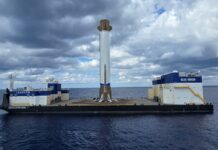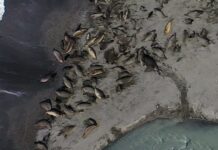Severe heatwaves and prolonged drought conditions are transforming the Amazon River’s lakes into dangerously hot basins, exceeding temperatures found in typical spa baths, according to a recent study. These extreme conditions are contributing to mass die-offs of endangered Amazon river dolphins and significant disruptions to the region’s aquatic ecosystem.
Extreme Heat and Shrinking Water Levels
The study reveals that one Amazonian lake reached a staggering 40°C (104°F), fueled by intense sunlight, clear skies, and rapidly decreasing water levels. Lake Tefé, for instance, saw its waters reach a scorching 41°C – hotter than a standard spa bath. Researchers described the water as unbearably hot, unsuitable even for brief contact. The combination of shallow water (just two meters deep) and intense solar radiation created a perfect storm for extreme heating.
Mass Dolphin Die-Offs and Ecosystem Disruption
The alarming water temperatures have had devastating consequences for the region’s wildlife. Between September and October 2023, researchers observed the unprecedented occurrence of up to 200 river dolphin carcasses washing ashore – a sight not witnessed in the region for at least a century. This dramatic event prompted a wider investigation into the conditions of other Amazonian water bodies.
Widespread High Temperatures and Lake Contraction
The study analyzed water temperatures in ten central Amazonian lakes during the 2023 drought, finding that half experienced exceptionally high daytime temperatures surpassing 37°C. The 2024 drought exacerbated the situation, with Lake Tefé losing approximately 75% of its surface area and Lake Badajós shrinking by a remarkable 90%. Historically, Lake Tefé typically reaches temperatures around 30°C during its hottest months, but in 2024, it experienced a dramatic surge to 40°C.
Long-Term Warming Trends and Global Implications
Researchers found that Amazonian lakes have been warming at a rate of 0.3 to 0.8°C per decade over the past 30 years – significantly faster than the global average. This accelerated warming, coupled with the shrinking lake sizes, highlights the profound impact of climate change on one of the world’s most vital ecosystems.
Expert Analysis and Concerns about Reproduction
Adrian Barnett, a senior lecturer in behavioral ecology at the University of Greenwich, emphasized the unprecedented nature of the temperature increase. “A 10°C rise in water temperature is unparalleled,” he stated. He also raised serious concerns about the reproductive success of fish, dolphins, and manatees, species that typically breed during the low-water season. Barnett predicted that the events of 2023 were likely devastating for many populations, and if these conditions persist, the populations and connected species will decline severely.
Addressing the Root Cause
Barnett stressed that local solutions are unlikely to be effective in addressing such a large-scale issue. “Something happening at such a huge scale really requires a systems approach – attacking the root cause of the problem, which is fossil fuel emissions and the causes of global warming itself.” The study serves as a stark reminder of the urgent need for global action to mitigate climate change and protect the Amazon’s fragile ecosystem.






































































